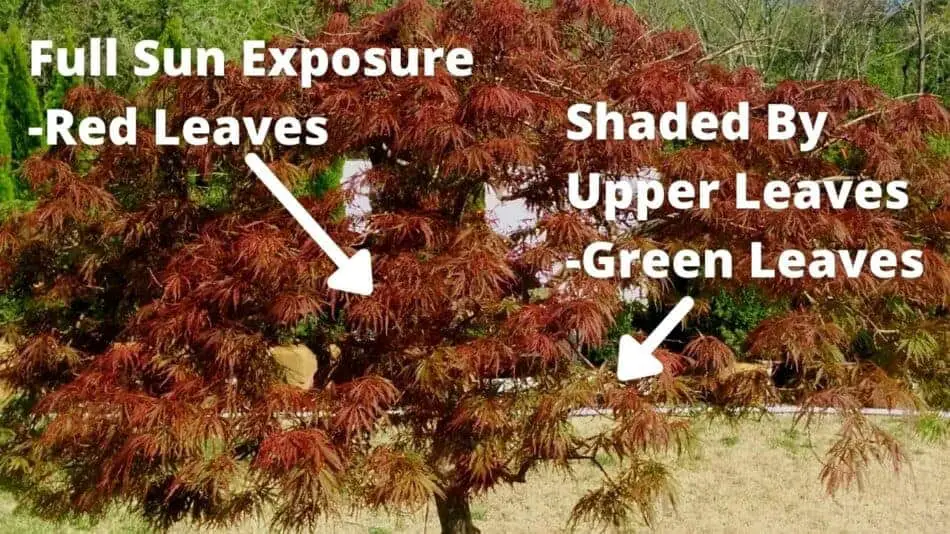There are 3 reasons your Japanese maple is green:
- Variety
- Season
- Light Intensity and duration
First, what variety of Japanese maple do you have?
There are many varieties that are naturally green such as:
- Acer disectum ‘Waterfall’
- Acer japonicum ‘Green Cascade’
- Acer palmatum
- Acer palmatum ‘Sango Kaku’
If your Japanese maple had red, purple, or other non-green leaves last year, and the leaves are green this year, your tree may be growing from below the graft union. Almost every named variety of Japanese Maple in the industry is grafted onto another rootstock. If your tree was killed back by winter stress, mechanical or rodent damage, insects, or disease, the new growth might very well come from the rootstock rather than the named variety you were expecting.

Second, leaf color can and does change throughout the season.
We regularly think of this in the fall prior to leaf drop, the display of dramatic fall colors. The leaves also can change color, and to green at different times of the year. First, many trees open with bright red leaves in the spring that mature into a shade of green for the summer portion of the season.
Bloodgood is an example of a well-known standard of a red leaf Japanese Maple, that slowly matures in the season to a green/burgundy color, especially when given the light conditions that Acer palmatum prefers, morning sun and afternoon shade. The color stays darker, better with more sun, but this stresses the tree and is not ideal.
Another example of leaf color changing from color to green is with Acer palmatum C. P. Thunberg ex A. Murray, a rare variety that has golden-yellow leaves throughout the growing season. This tree’s leaves turn green in the fall just prior to changing to its fall pre-drop color of red.
Third, the most common cause for your Japanese Maples having green leaves and the color you expected is the sunlight duration and intensity.

Japanese maples prefer a part-shade location. High bright shade, or morning sun with shade in the afternoon, especially in hot climates. The more direct sun the Japanese maple is exposed to, the more pigments certain trees produce to protect the tree’s leaves from the direct sunlight; which shows as the colors we see, usually reds, burgundies, or yellows.

With plenty of shade, the Japanese maple does not need to produce these protective compounds and the green color from the chlorophyll shows through.
If the shade is coming from other trees in the landscape, you can prune them to allow more sun through. You can also re-evaluate your landscape as to an area with more sun, and move, transplant, your Japanese maple. For how to evaluate your landscape to properly situate your tree, click here.
Japanese Maples are a fabulous specimen tree for your landscape; proper planning and positioning will allow them to grow and mature into the glorious trees they can be.
https://cdnsciencepub.com/doi/full/10.1139/cjps-2016-0307
Canadian Journal of Plant Science, Volume 97, Number 5, October 2017, Pages: 775 – 783, Editor: M. T. Charles




